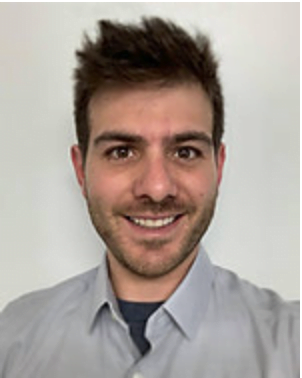
Name 3 words that describe a teaching shift with you.
Enthusiasm, excitement, and engagement
What delivery methods do use when teaching on shift?
I love a blank sheet of paper. I can list out a differential or better yet, I can draw out a mindmap of a certain topic. I can do this anywhere, at the bedside, in the hallway, or at the computer. I also can give the learner the paper so they can frame it and keep it forever (or at least that is what I imagine happens to this literary gold?)
What learning theory best describes your approach to teaching?
My approach to teaching fits in with a sociocultural theory of learning. I like to not only talk about medicine but to show how medicine fits into actual concrete practices. I give real-world examples of situations I have been in, along with showing learners how these situations and approaches might change when I worked in alternative institutions. A topic I love to teach specifically is workflow efficiency. I feel I can teach this topic as it fits into the actual culture of different practice patterns of different institutions well with sociocultural theory. I also love to invite learners into various communities of practice so that they can further learn topics along with other like-minded individuals who share their passions!
What is one thing (if nothing else) that you hope to instill in those you teach?
That you should never stop striving to continue to learn. Medicine is not just a job, but a way of life. It’s called the art of medicine. You are always learning, growing, developing, and creating art in what you do. Your practice today will not (and should not) be your practice pattern in 10 years. Therefore, I hope that through my excitement to learn, grow and teach, others will share that excitement in themselves!
How do you balance your flow with on-shift teaching? Does this come at the expense of your documentation?
Definitely, my documentation suffers. But I find spending more time thinking about and caring for a patient is more important to me than documentation. Teaching is part of that time spent thinking about and caring for patients, which is why I prioritize it. I am also not afraid to open up my remote access while at home to catch up on notes.
Do you feel departmental flow and metrics adversely affect teaching? What is your approach to excelling at both?
I especially love teaching workflow efficiency, which is the art of departmental flow and metrics. So I use real-world in-the-moment examples to help motivate learners to improve, which directly helps protect against my metrics getting adversely affected. I also find that spending extra time explaining why you do or don’t think something is necessary can save time in the future, which aids in overall efficiency.
Do you start a teaching shift with certain objectives or develop them as a shift unfolds?
I like to ask my learners what they hope to accomplish during a shift and what I can specifically help them on. How hands-on do they need me to be? This helps provide the objectives they wish to achieve during their shift.
Do you typically see patients before or after they are presented to you?
I prefer to see them before. If I can catch EMS as they bring in the patient that is my preferred. Unfortunately, this isn’t always possible.
How do you boost morale amongst learners on shift?
I find that when a learner understands that you are there for them and their learning and betterment, it helps with the overall mood. They are not just worker bees, trying to churn through an endless line of patients. They are there to grow and find meaning in their shift. Therefore by focusing on what they need and showing that you care for them to improve and grow, they often have more gratification from their shifts as a result
How do you provide learners feedback?
My feedback is typically throughout the shift. I try to provide a summary of feedback at the end if time permits.
What are your three favorite topics to teach during a shift?
Efficiency, EKG/cardiology, and procedure tips

Read other How I Educate posts for more tips on how to approach on-shift teaching.
Author information
The post How I Educate Series: Guy Carmelli, MD appeared first on ALiEM.

